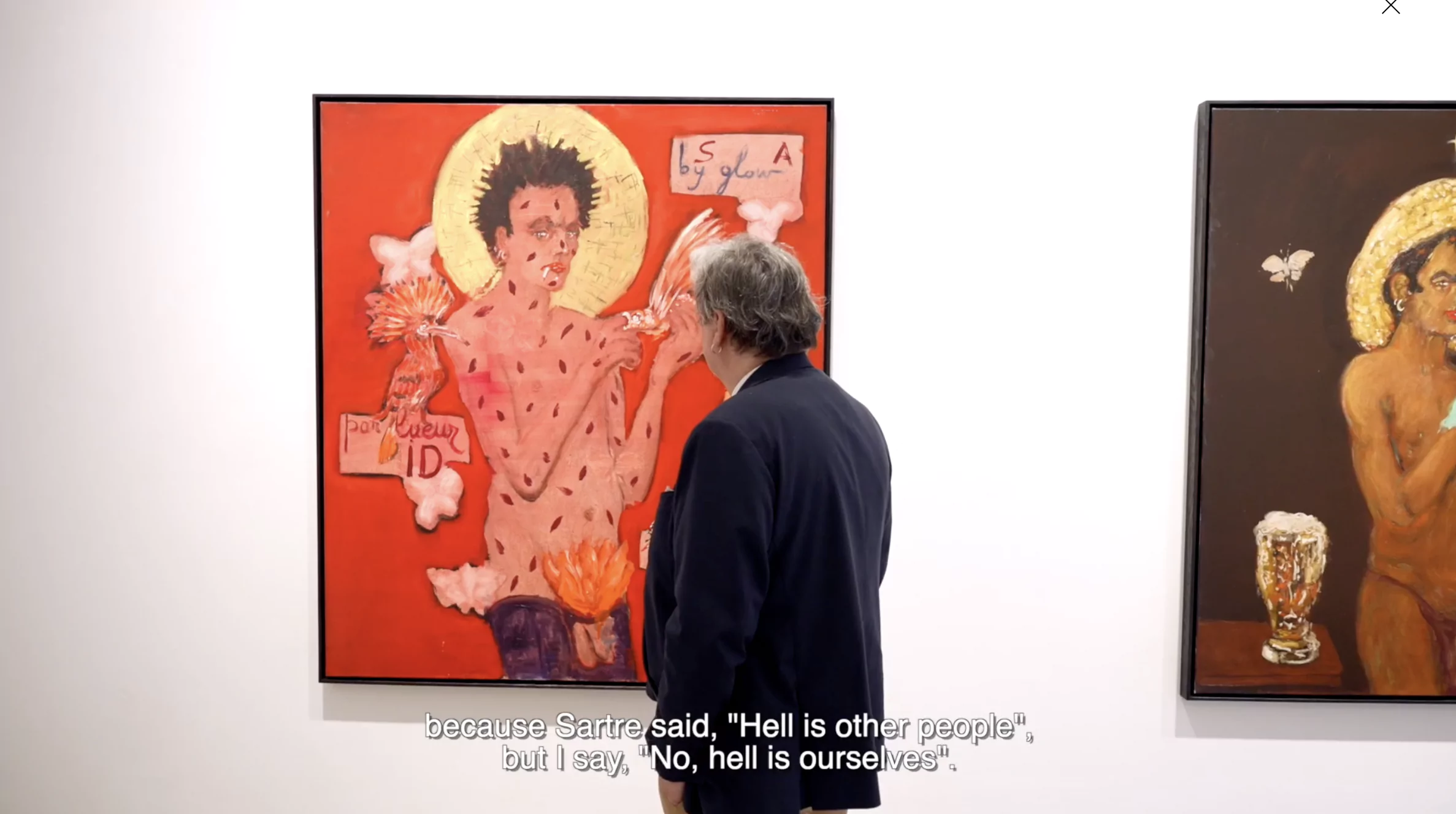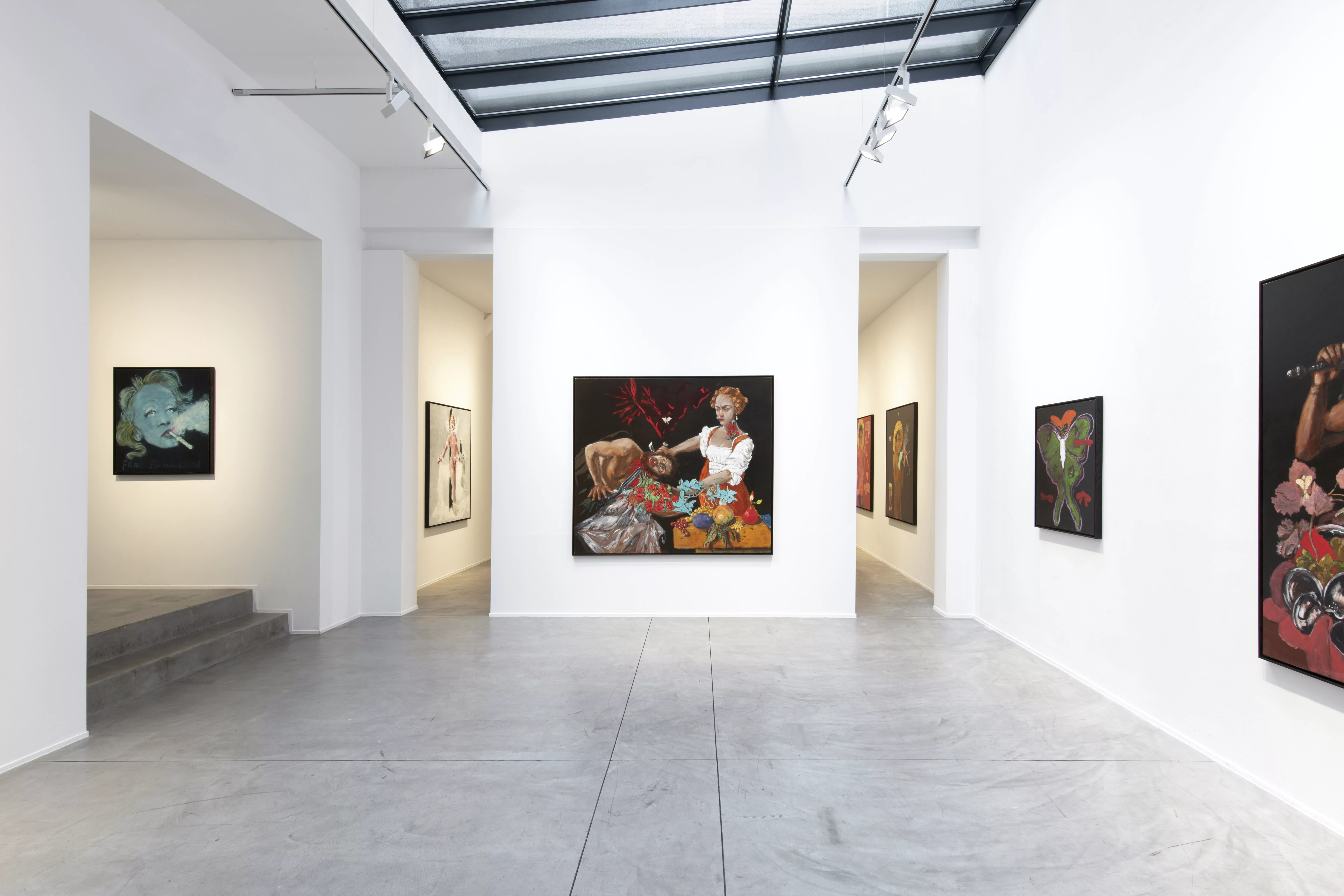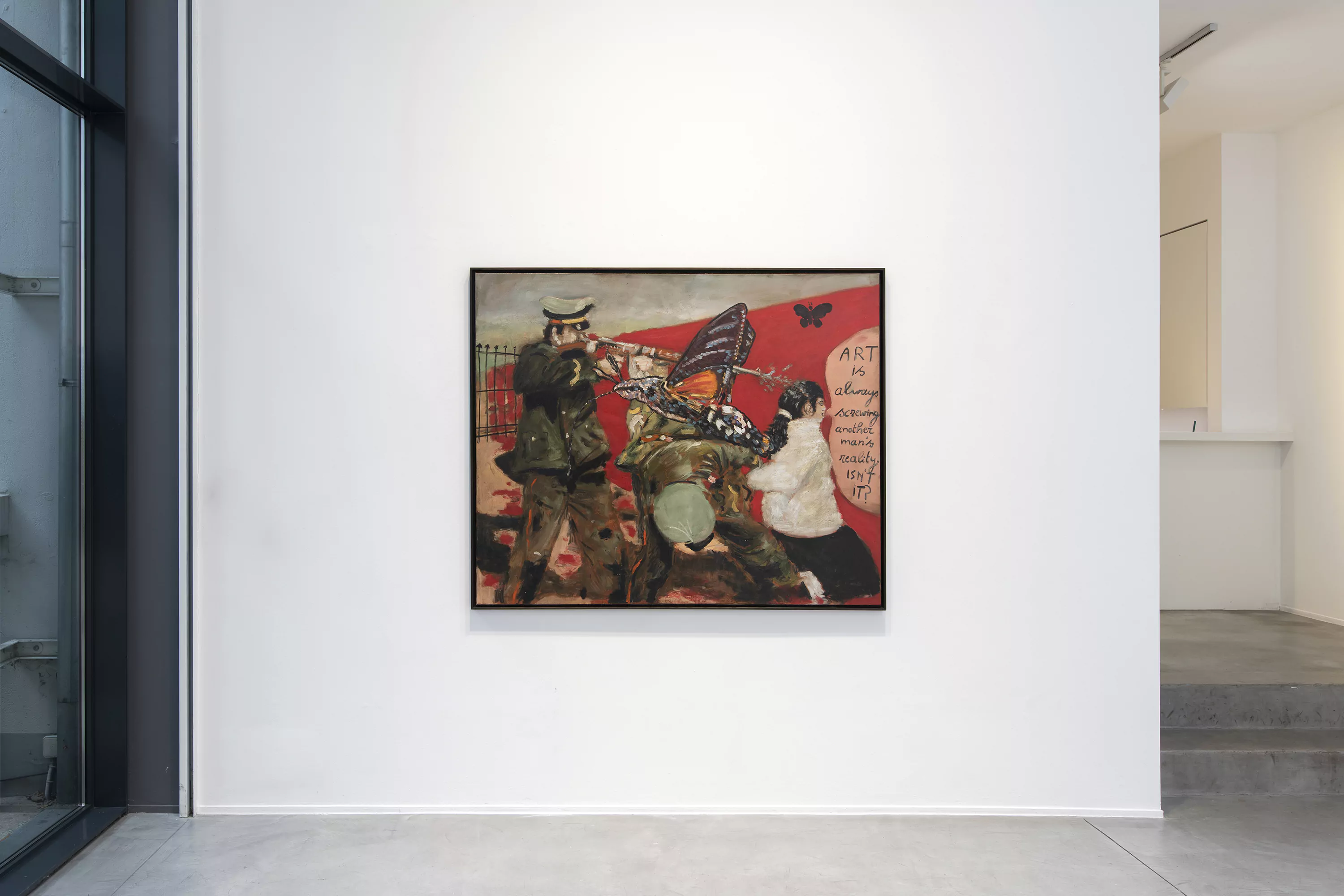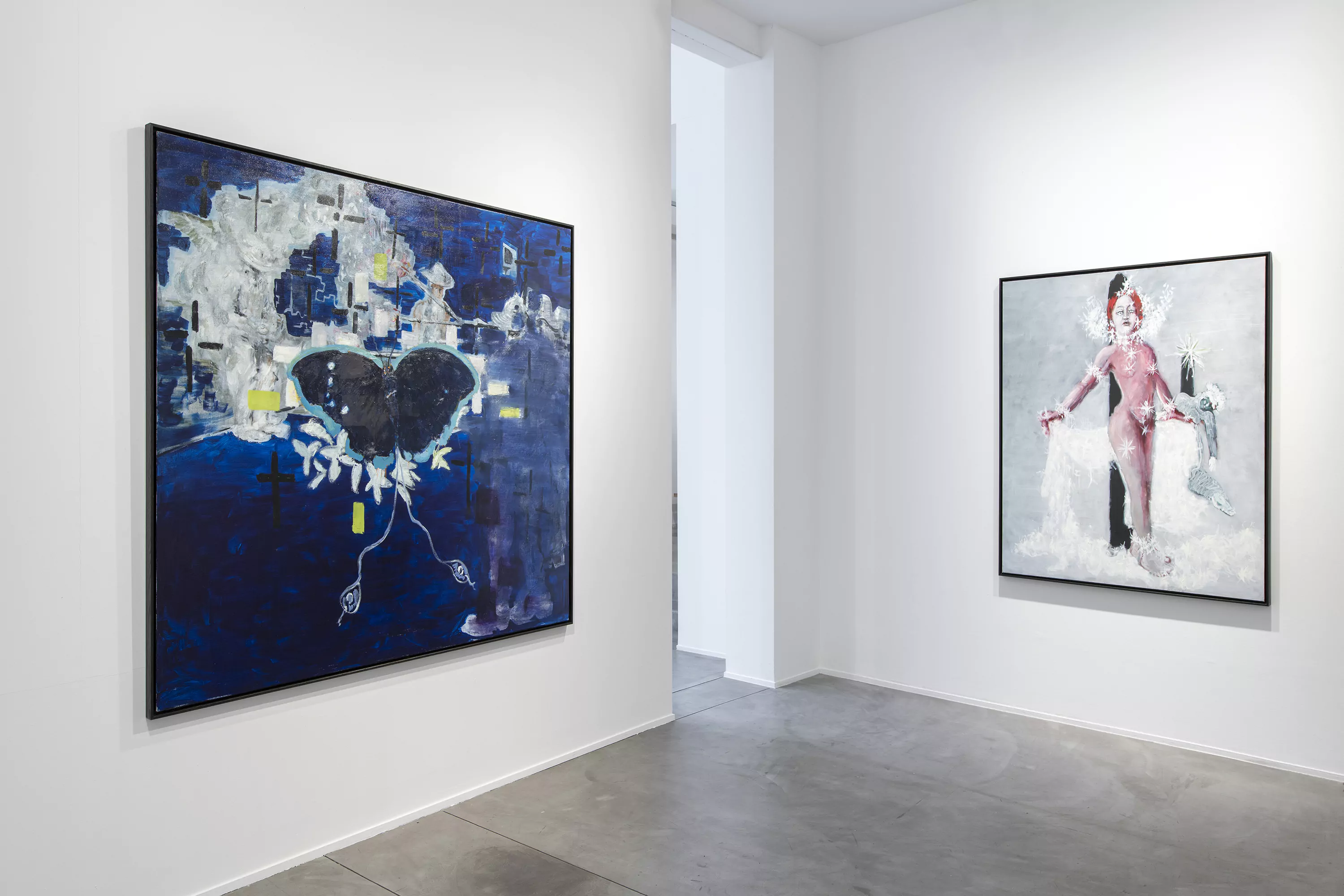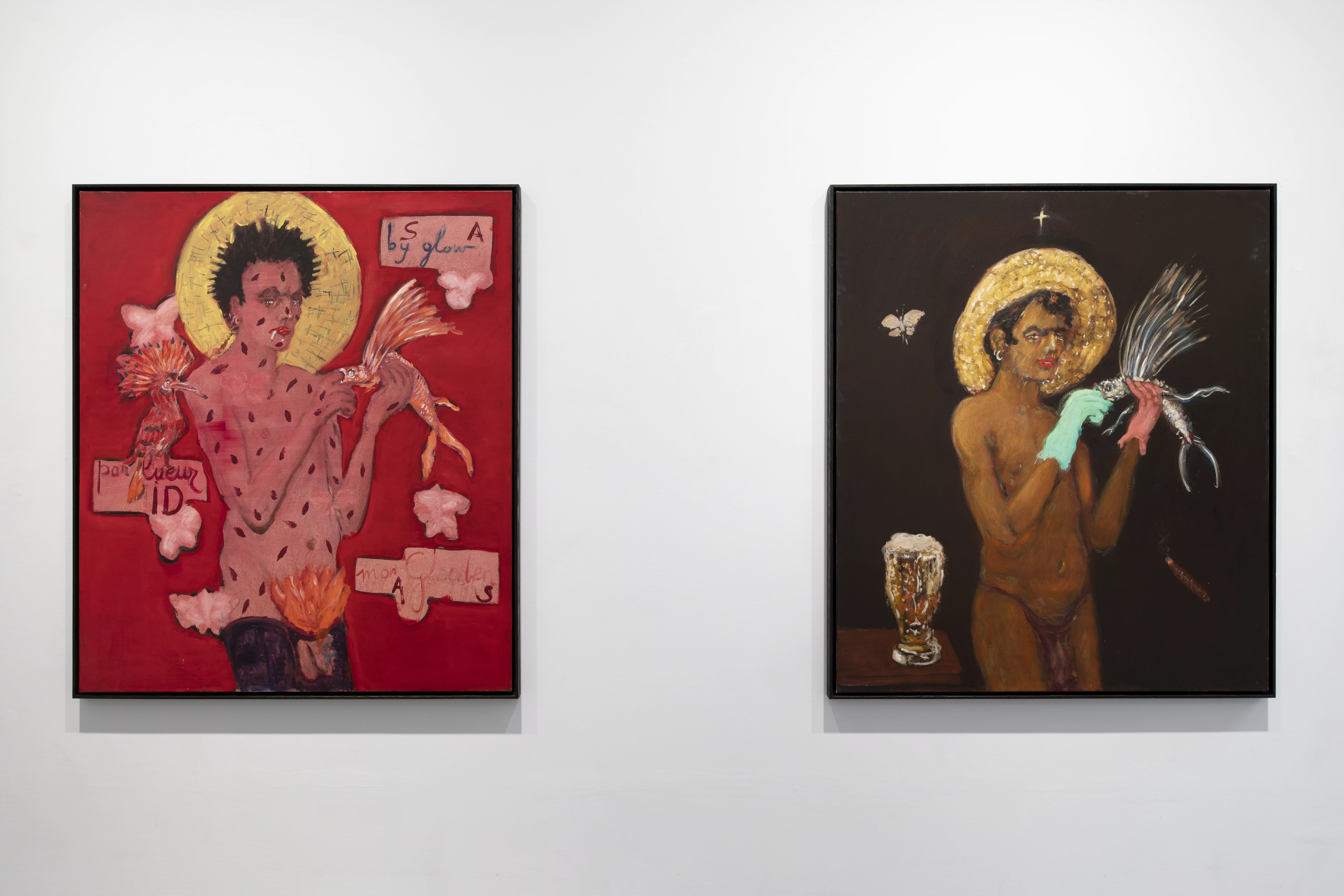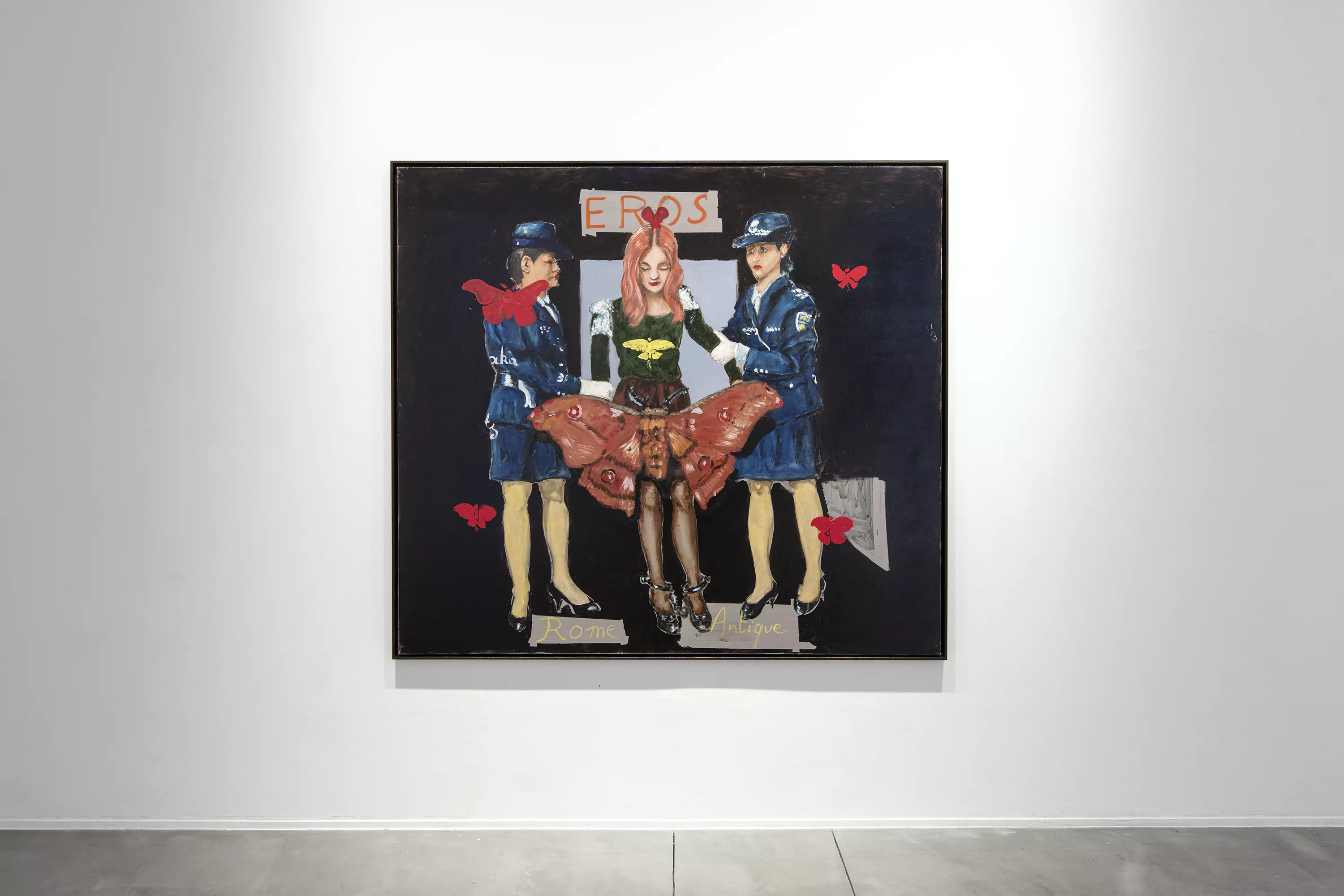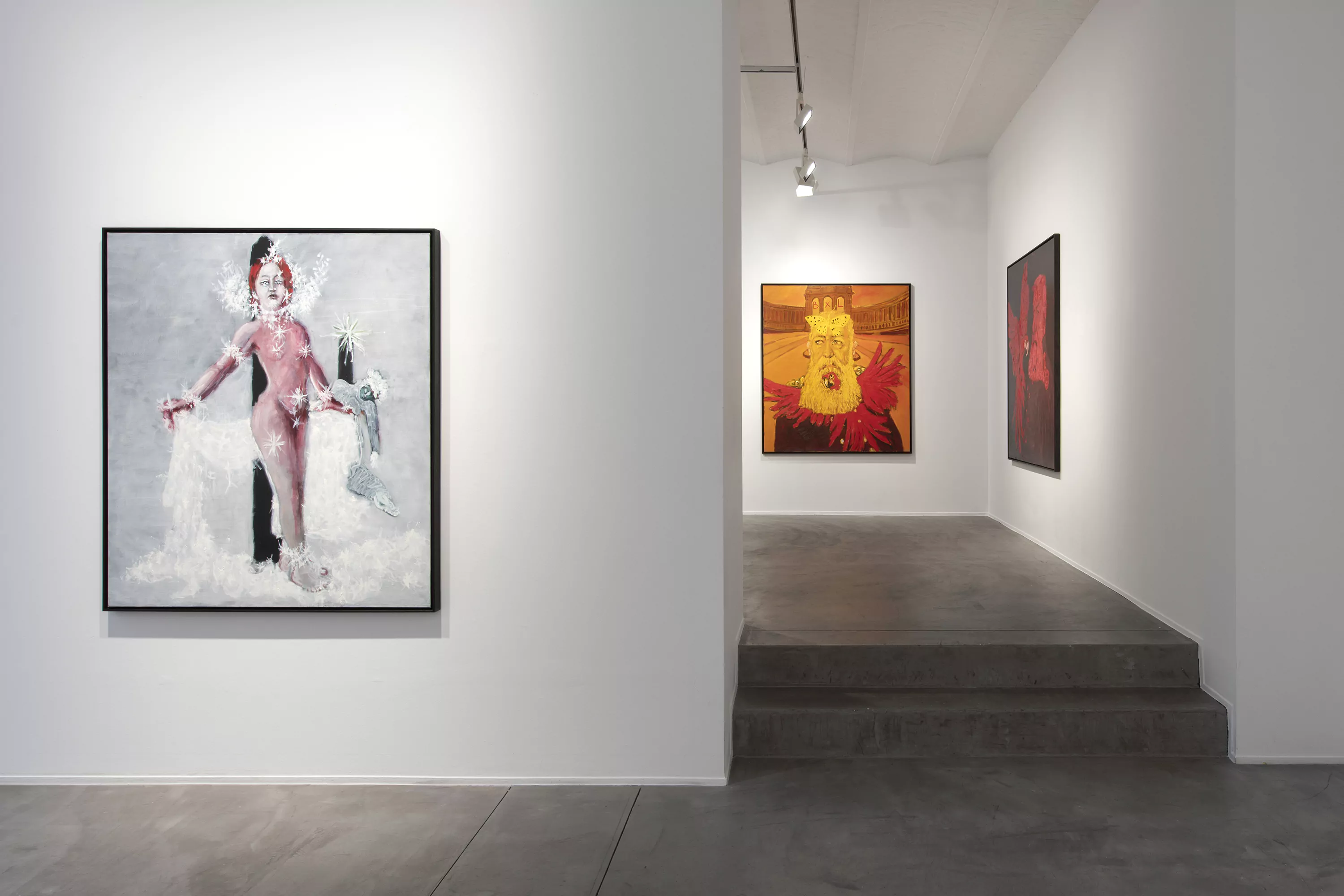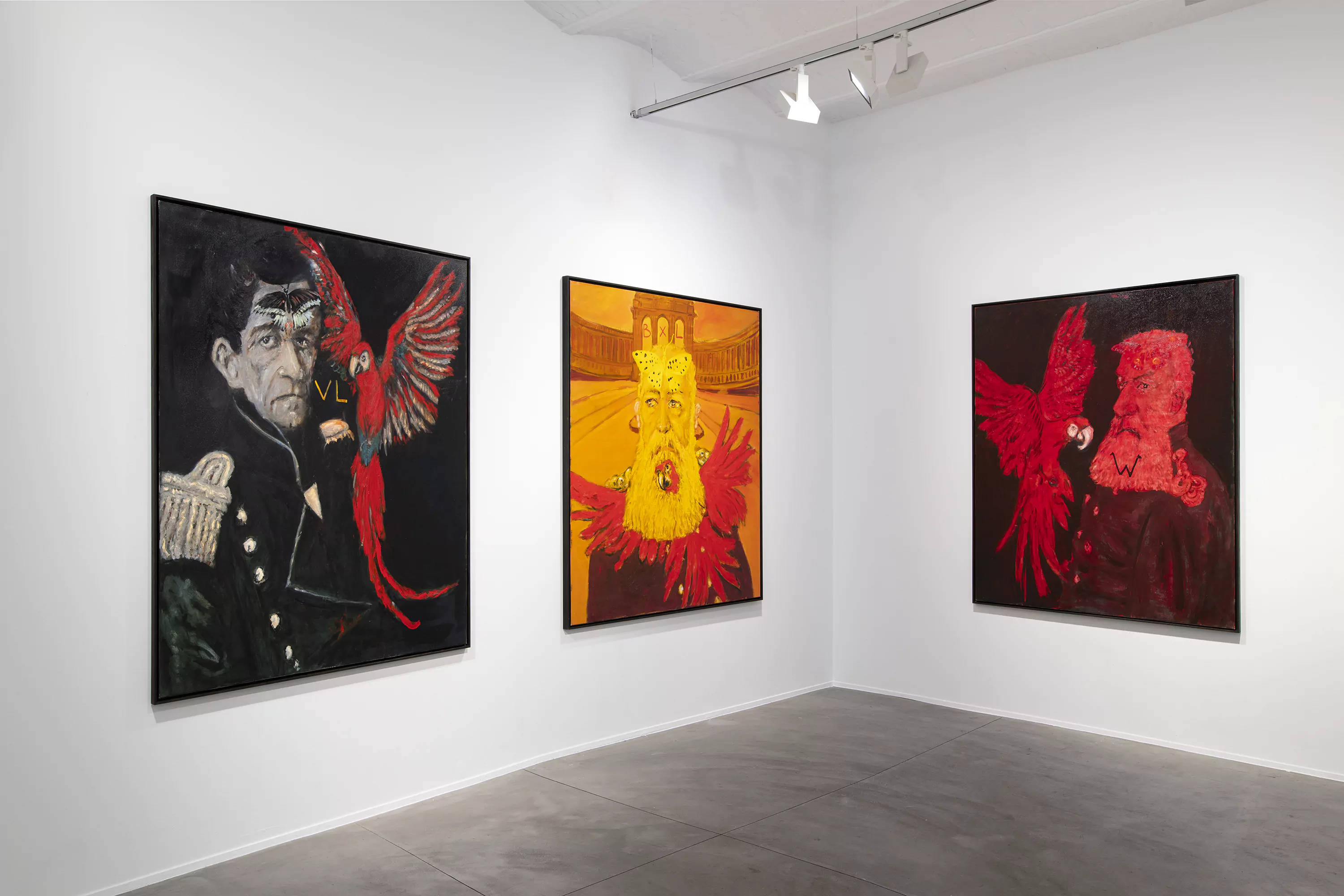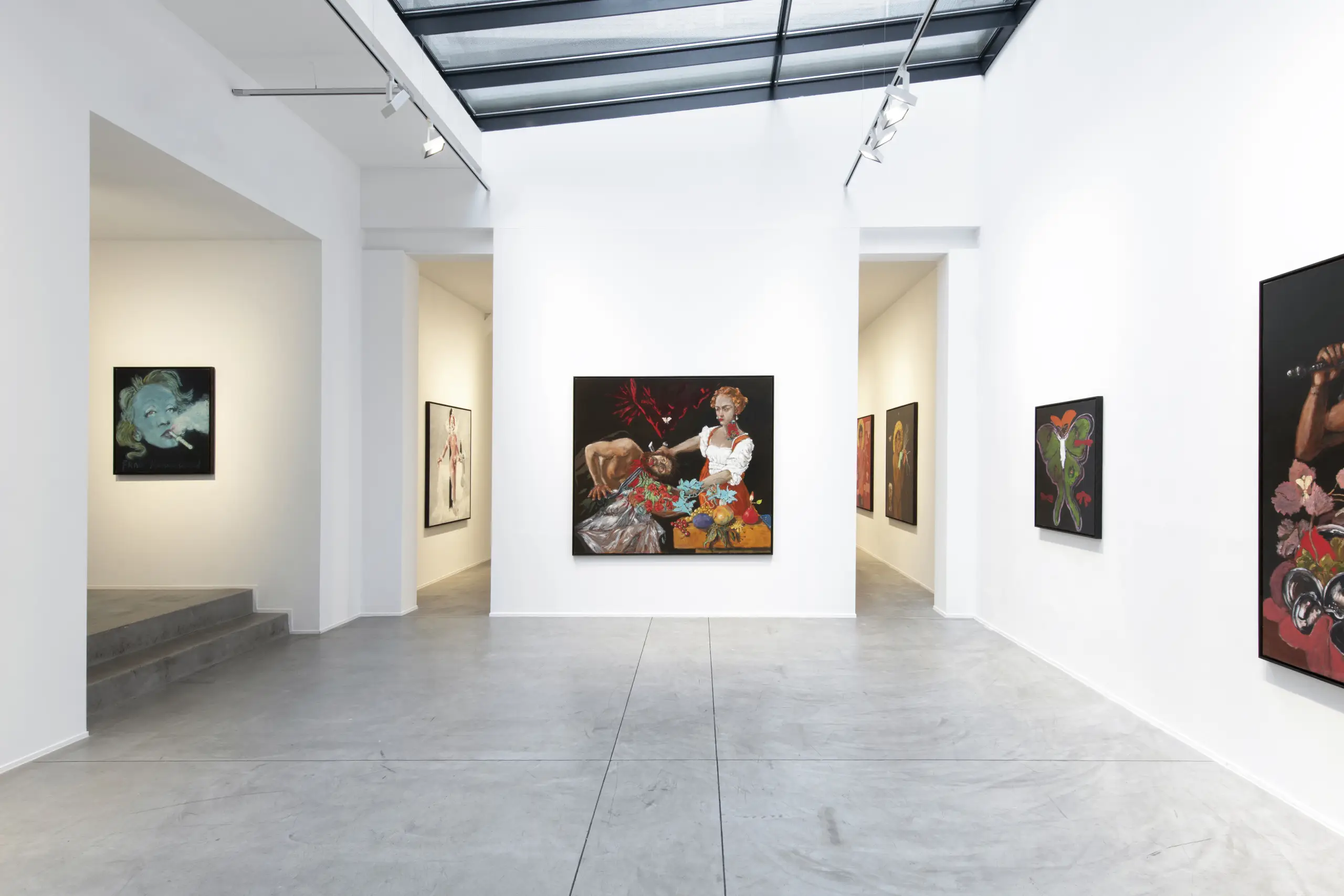
Jan Van Imschoot
The Danse of Elusive Evil
As the spectacular retrospective of Jan Van Imschoot’s art at the Ghent SMAK comes to an end, the Flemish painter unveils his latest work in Brussels: an exploration of evil through the ages.
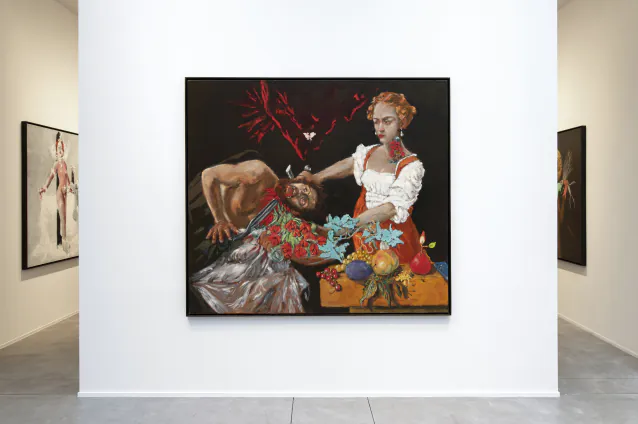
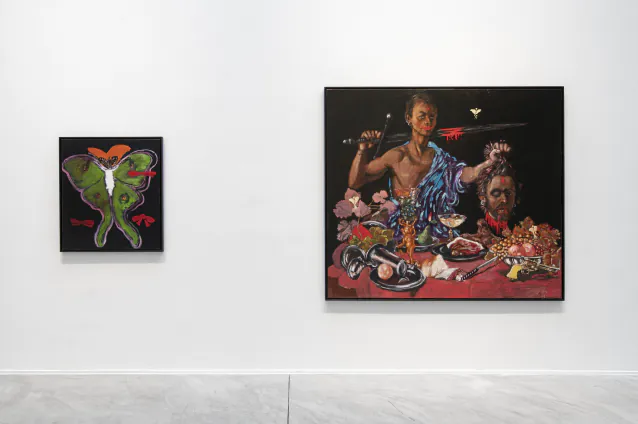
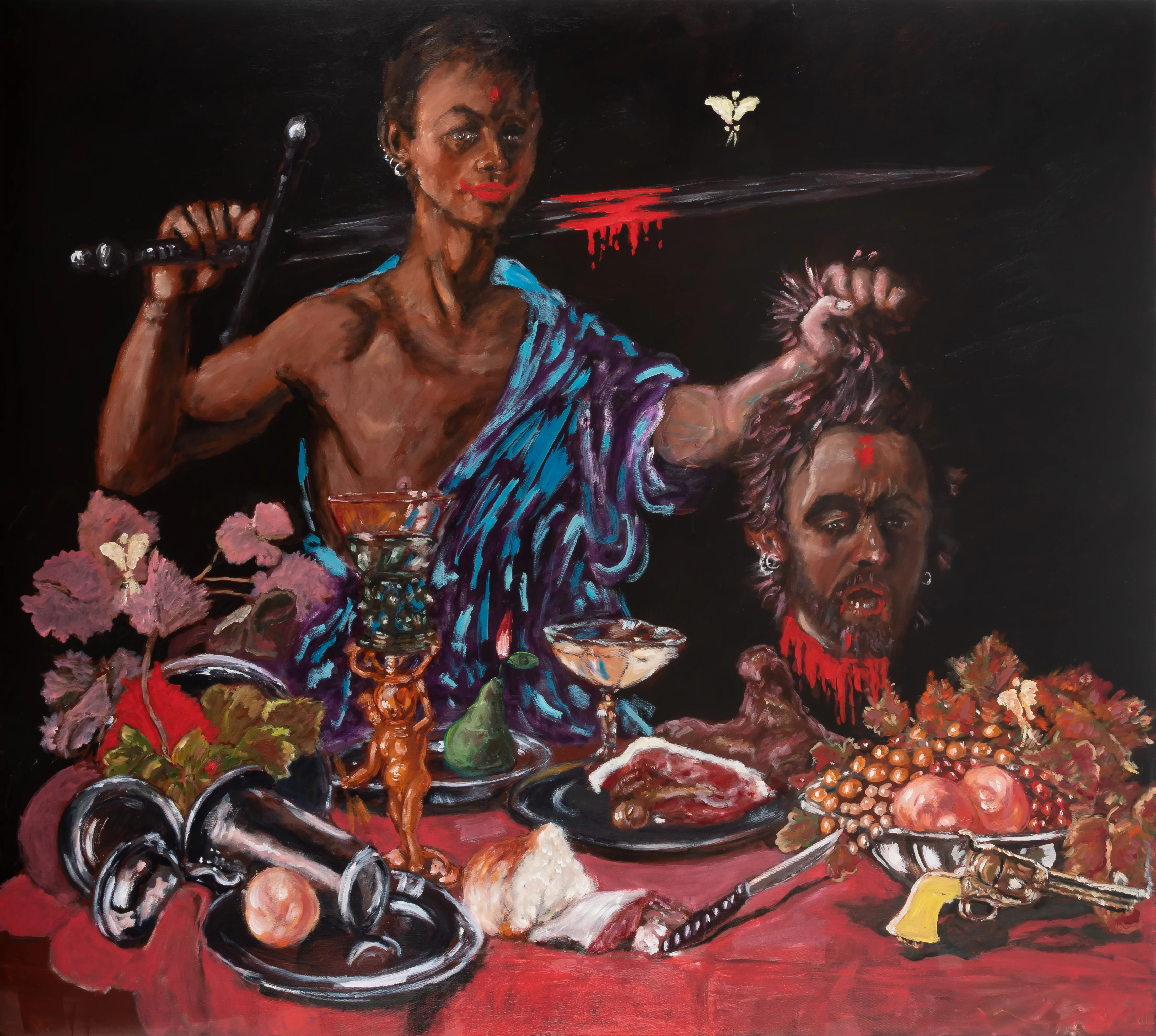
As the spectacular retrospective of Jan Van Imschoot’s art at the Ghent SMAK comes to an end, the Flemish painter unveils his latest work in Brussels: an exploration of evil through the ages. This latest show is the fruit of a rigorous and meticulous process of exploration inspired selected museum masterpieces and archives. Jan Van Imschoot narrates a story unfurling across 17 baroque and colourful canvases. The butterfly, symbol of the soul or the psyche, flutters unobtrusively through the paintings, now an opulent, dark form concealing, eclipse-like, a Mexican firing squad, now landing on the face of Leopold II, the dynastic figure behind the bloodthirsty colonisation of the Congo by Belgium. Capital punishment is a recurring theme: as an object of fantasy, source of intimidation, vestige of history or national folklore. Under the discreet patronage of Caravaggio, Van Imschoot offers a fresh interpretation of the myth of Holofernes murdered by the seductive Judith.
He depicts the enchanting Mata Hari, victim of occupied France. He portrays a scene from Chinese television, fictional but perverse, of the last day of 2 a sentenced woman, held captive by two police officers and draws the outlines of a young South African woman in the hands of her executioner in a white jacket and top hat. “For the world to believable, we need diverging views and confrontation between these views,” explains the artist. “Art, in all its forms, plays a vital role in this humanist necessity. Art makes our thinking more flexible, lets our minds travel beyond borders.” In his hands, the painting becomes a playground for exploring the triangular relationship between his three greatest passions: art, language and truth.
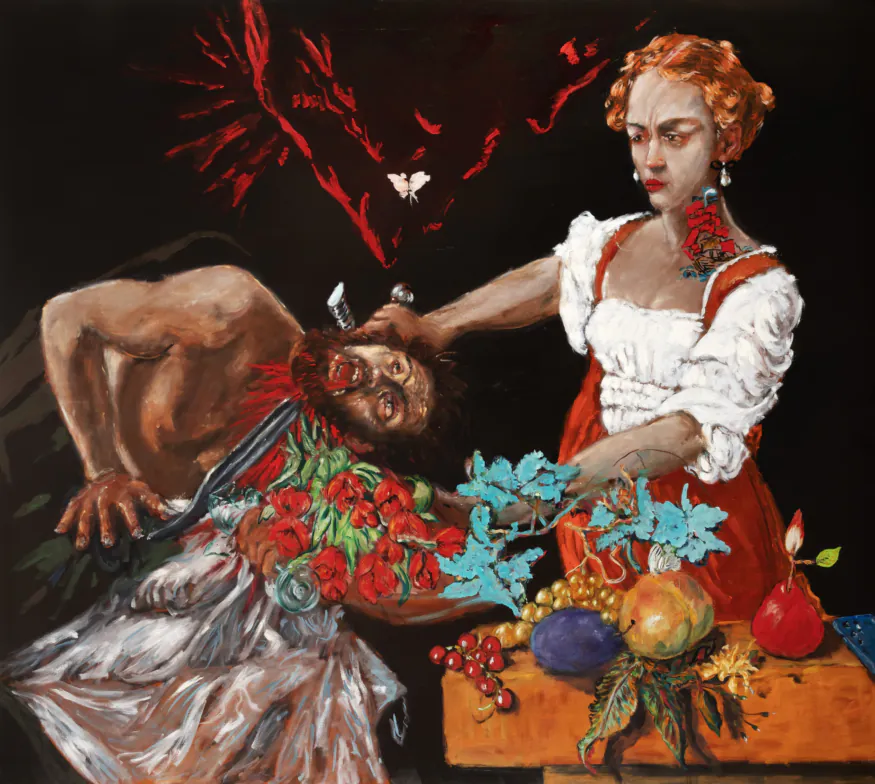
Couper des fleurs par malheur
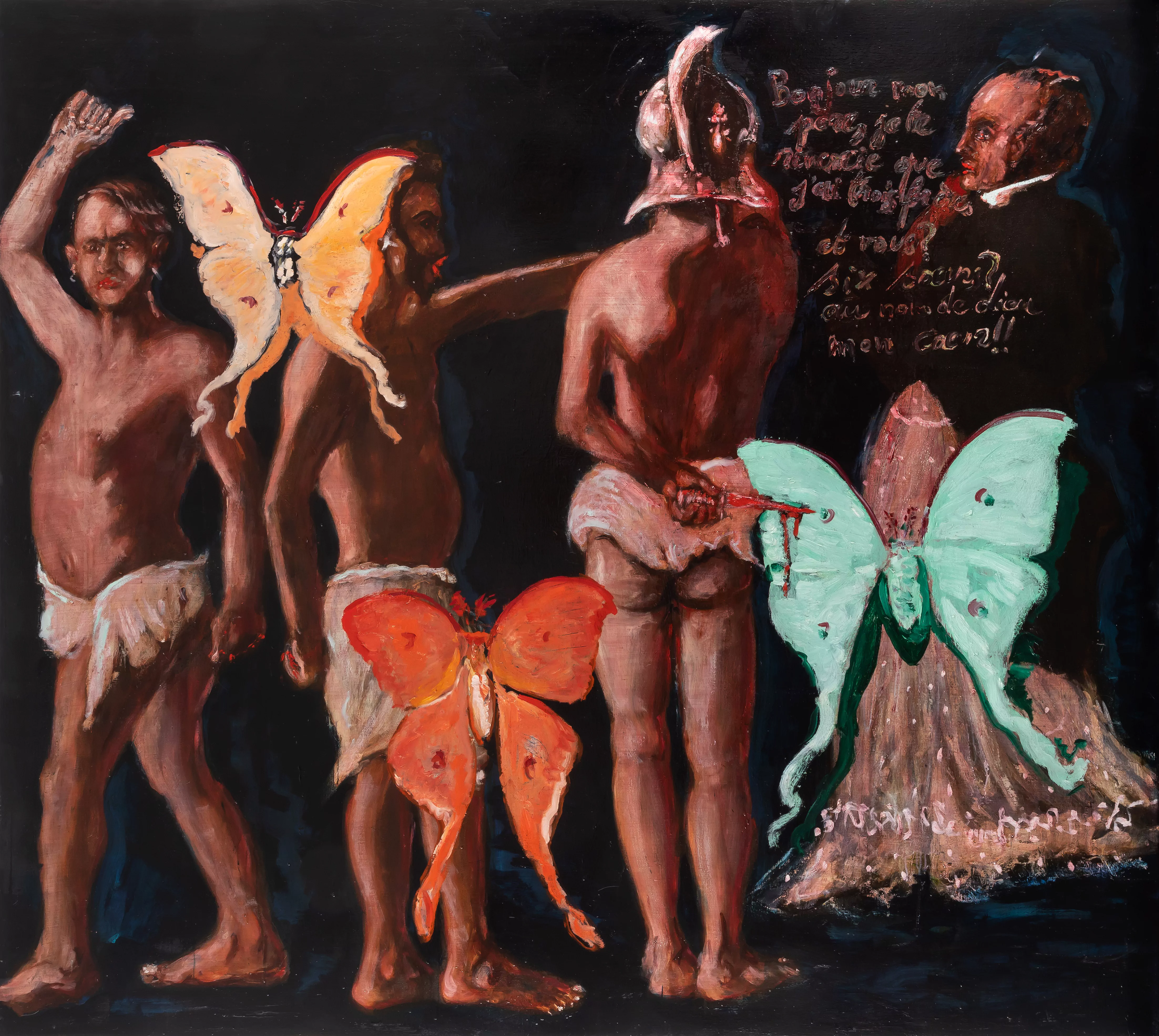
The artist
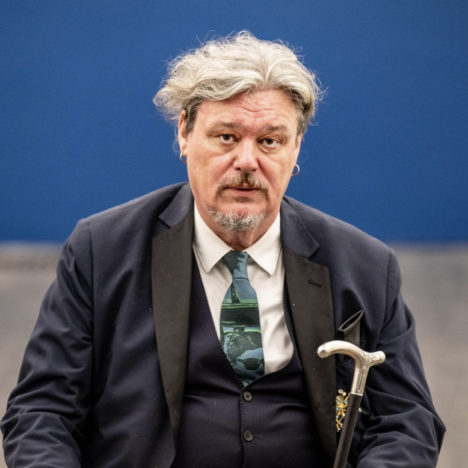
Born in 1963 in Ghent, Jan Van Imschoot has been living and working in France since 2013. Jan Van Imschoot’s exploration of the possibilities offered by painting have resulted in a body of work that draws its power from highly critical and dramatic themes and contains references to countless artists, from Tintoret to Luc Tuymans, Goya to Matisse. Jan Van Imschoot places his figures, decors and narratives at History’s margins, using assembled perspectives, strong tones, bodies in motion and brushwork he describes as ‘anarcho-baroque’. His work delves into a number of recurring motifs: freedom, censorship and the violence of political and ideological systems.
